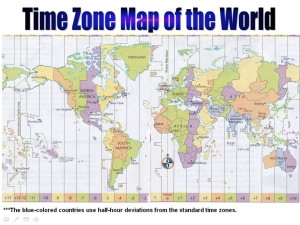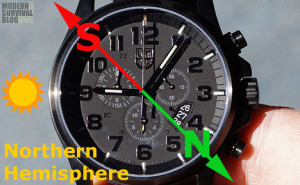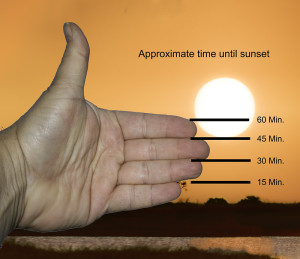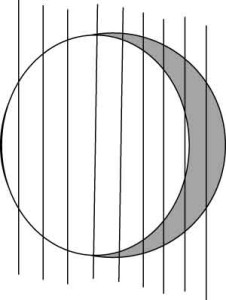This week we’re going to cover some bushcraft basics. Knowing an approximate time of day or night is a useful ability when hiking, camping or working outdoors. When out in the wilderness you should always have a compass, but if it should become lost or broken, knowing how to find your way is pretty important.
We’ll begin with some global facts. Both the sun and moon rise in the east and set in the west. In the northern hemisphere they track through the southern portion of the sky and in the southern hemisphere the reverse is true. In the mid latitudes of the northern hemisphere during the summer there is approximately 14 hours of daylight and 10 hours of dark; while in the winter there is 10 hours of daylight to 14 hours of dark. The southern hemisphere is exactly the opposite from the northern and around the equator it is basically 12 hours of each all year long extending to the mid-latitudes in the spring and fall. Noon or “high noon” occurs at the high point of the sun tracking through the sky if you live in the center of your time-zone and it isn’t daylight savings time. As an example, in Chicago in the summertime noon would occur 30 minutes prior to the sun reaching its zenith. Add an hour for daylight savings time and subtract 30 minutes because Chicago is on the eastern side of its time zone. Therefore the sun would actually zenith at 12:30 pm.
while in the winter there is 10 hours of daylight to 14 hours of dark. The southern hemisphere is exactly the opposite from the northern and around the equator it is basically 12 hours of each all year long extending to the mid-latitudes in the spring and fall. Noon or “high noon” occurs at the high point of the sun tracking through the sky if you live in the center of your time-zone and it isn’t daylight savings time. As an example, in Chicago in the summertime noon would occur 30 minutes prior to the sun reaching its zenith. Add an hour for daylight savings time and subtract 30 minutes because Chicago is on the eastern side of its time zone. Therefore the sun would actually zenith at 12:30 pm.
Knowing when noon is and what part of the year we are in allows us to divide the sky into segments, between 5 and 7 on each side of the zenith depending on the season. So if you have a compass but no watch you can tell the time by the suns position.
If you have a watch but no compass point the hour hand at the sun then put a blade of grass or small twig across the watch halfway between the 12 o’clock position and the hour hand; in the northern hemisphere the half way position is south and the opposite end is north, the opposite is true in the southern hemisphere.
hand at the sun then put a blade of grass or small twig across the watch halfway between the 12 o’clock position and the hour hand; in the northern hemisphere the half way position is south and the opposite end is north, the opposite is true in the southern hemisphere.
Another useful thing to be able to estimate is the amount of daylight remaining. As the sun begins to get close to the horizon, hold your hand sideways at arms length with the fingers parallel to the horizon, each  finger width between the sun and the horizon represents approximately 15 minutes until sunset.
finger width between the sun and the horizon represents approximately 15 minutes until sunset.
All of the methods above can be duplicated at night with a full moon. It’s when the moon isn’t full that things become a bit complicated. Look at the phase of the moon and divide the circle of the moon by the number of segments of hours in the night. For example in the summer divide by 10 in winter 14, counting from the right side the number of dark segments tells how many hours before sunrise the moon will set in the case of a waning moon. In the case of a waxing moon it tells how many hours after sunset the moon will rise. By knowing what time the moon will rise and set allows us to know when the moon will be at zenith thus directly south in the northern hemisphere. So in the case of the moon graphic, on a summer night, the moon is divided into 10 increments, the dark portion is 2 increments therefore the moon will set 2 hours before sunrise. In this case, sunrise corrected for daylight savings time would be approximately 6:00 am and sunset would be 8:00 pm, moonrise would be 2 hours before sunset and moonset would be 2 hours before sunrise, or moonrise at 4:00 pm and moonset at 4 am. Therefore the moon would be at zenith at 10:00 pm, or directly south in the northern hemisphere.
on a summer night, the moon is divided into 10 increments, the dark portion is 2 increments therefore the moon will set 2 hours before sunrise. In this case, sunrise corrected for daylight savings time would be approximately 6:00 am and sunset would be 8:00 pm, moonrise would be 2 hours before sunset and moonset would be 2 hours before sunrise, or moonrise at 4:00 pm and moonset at 4 am. Therefore the moon would be at zenith at 10:00 pm, or directly south in the northern hemisphere.
